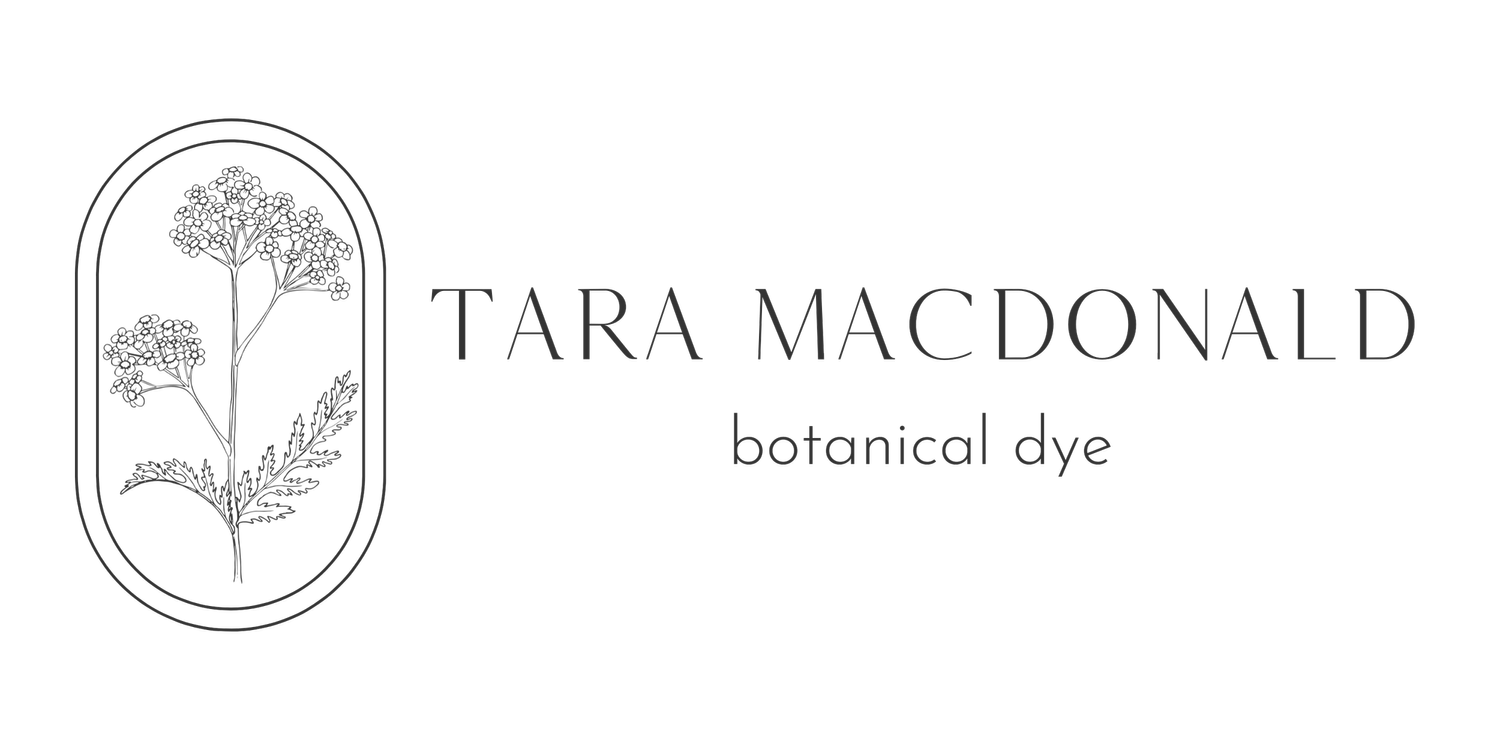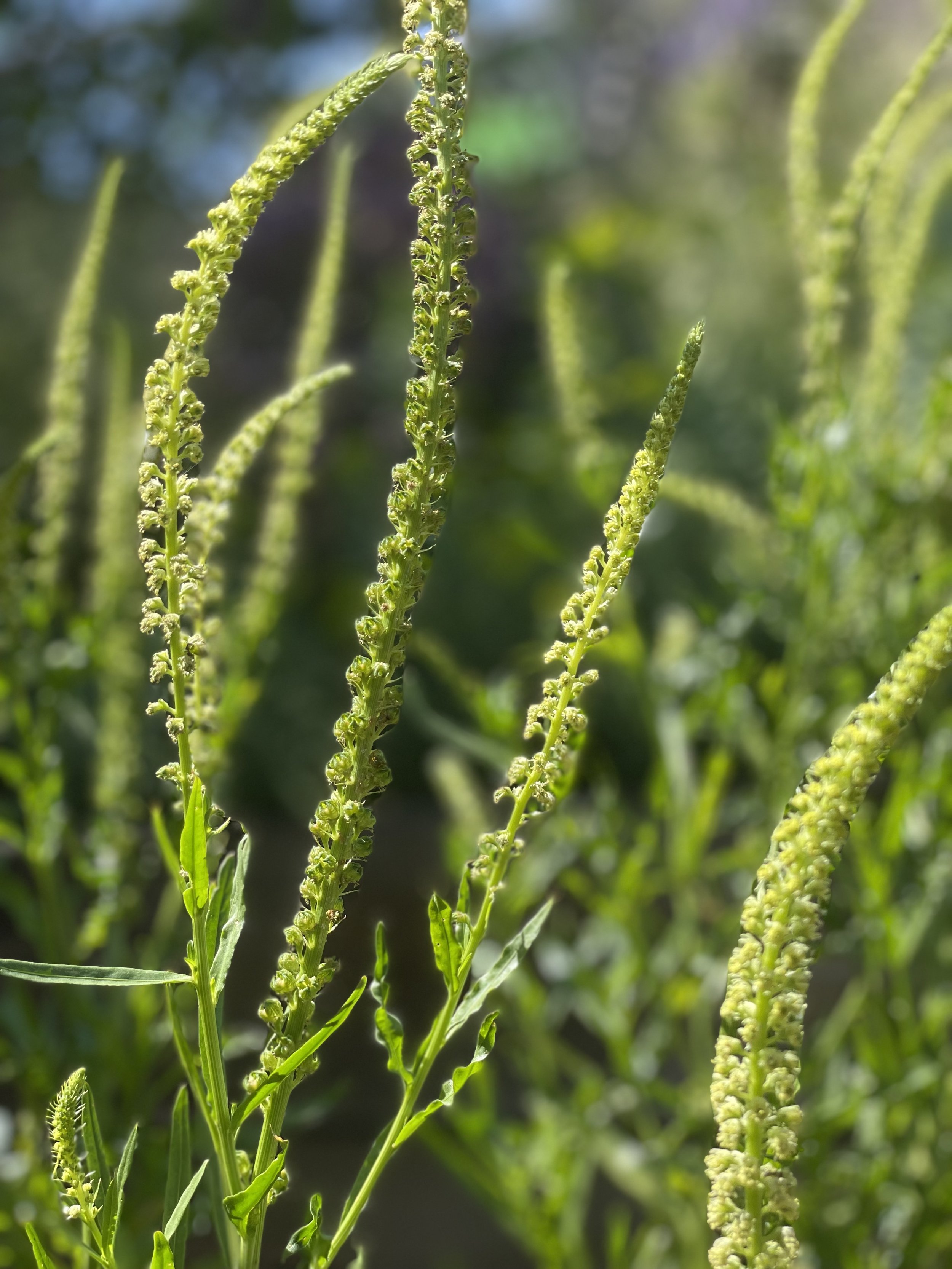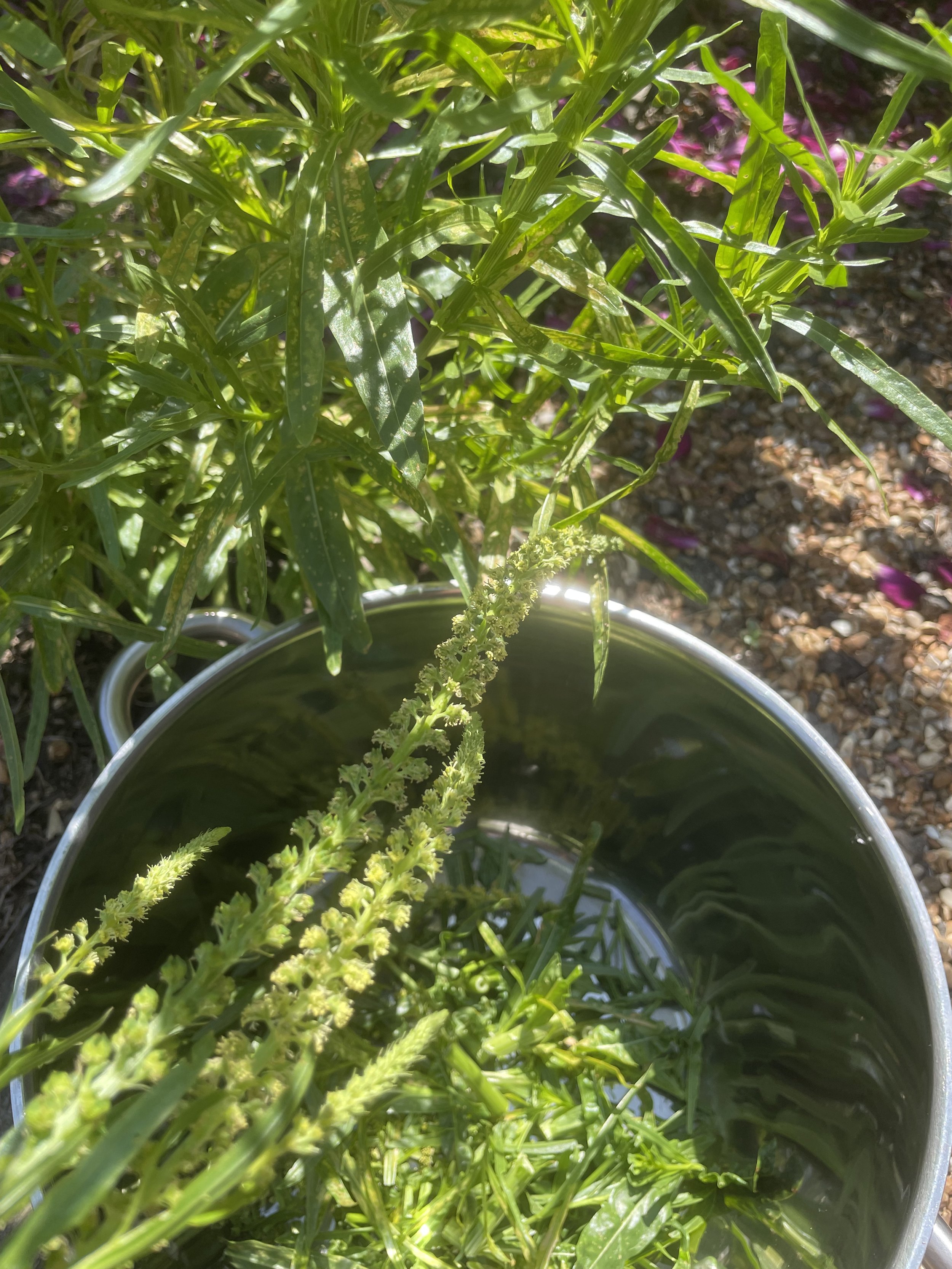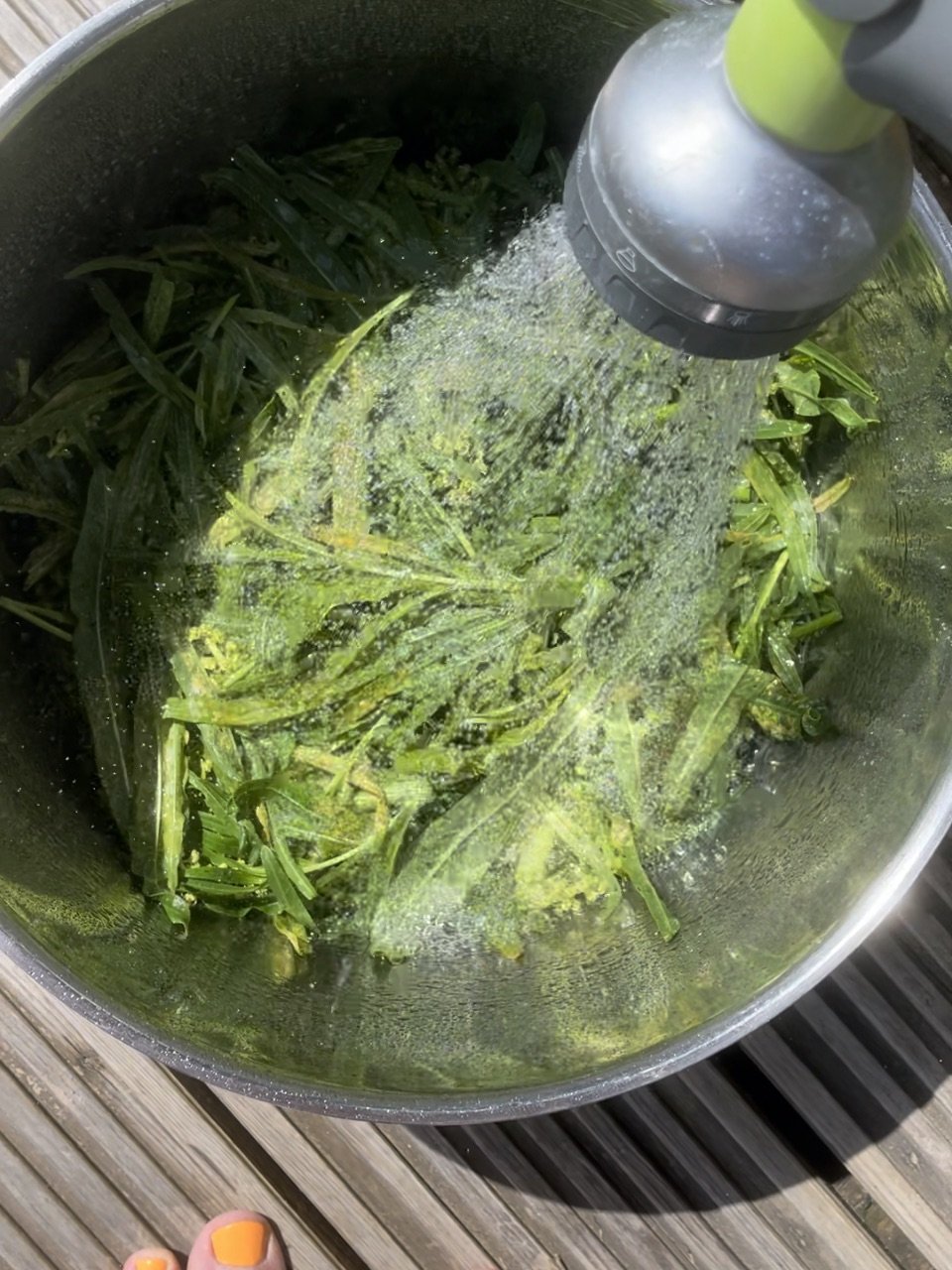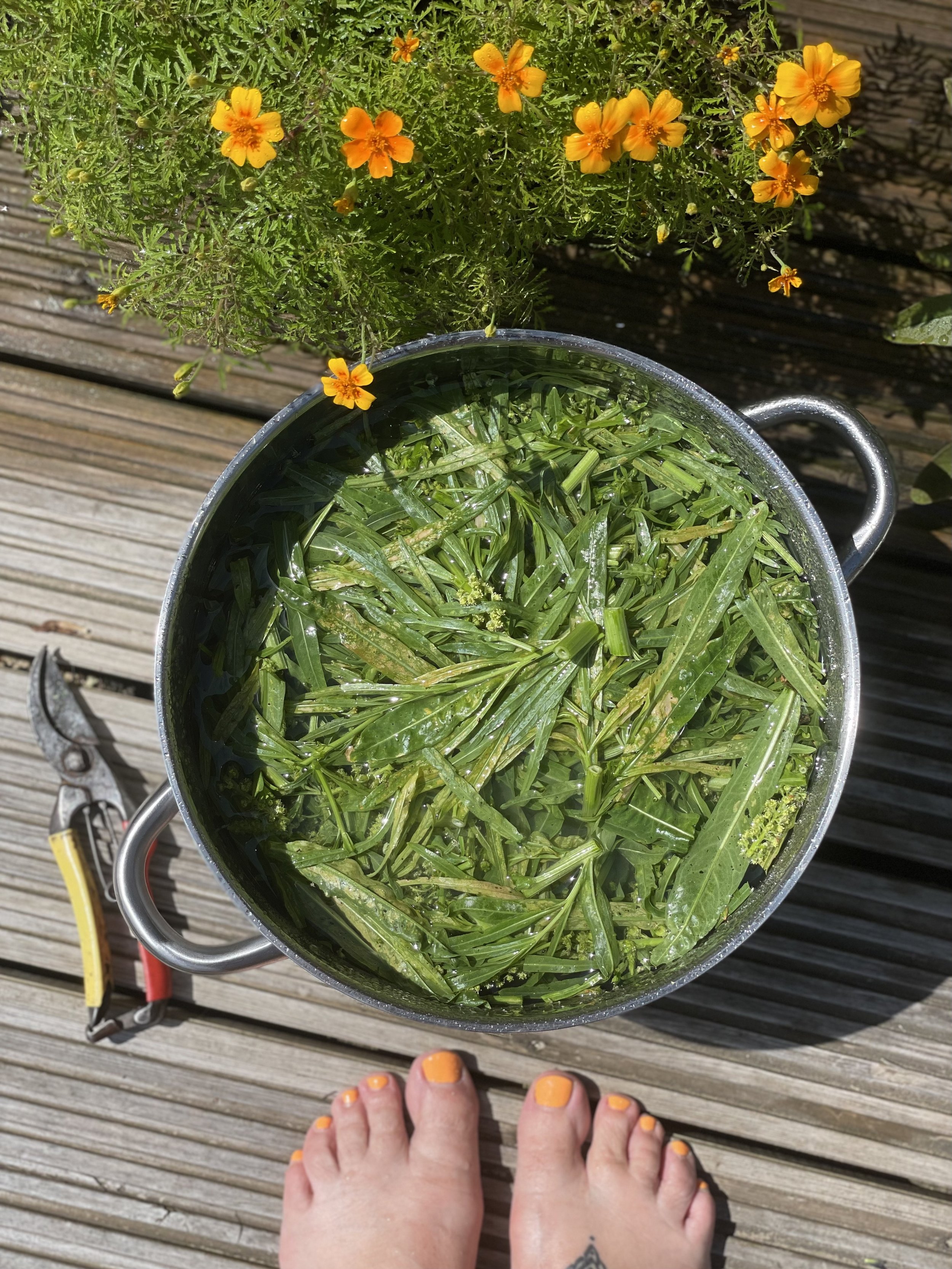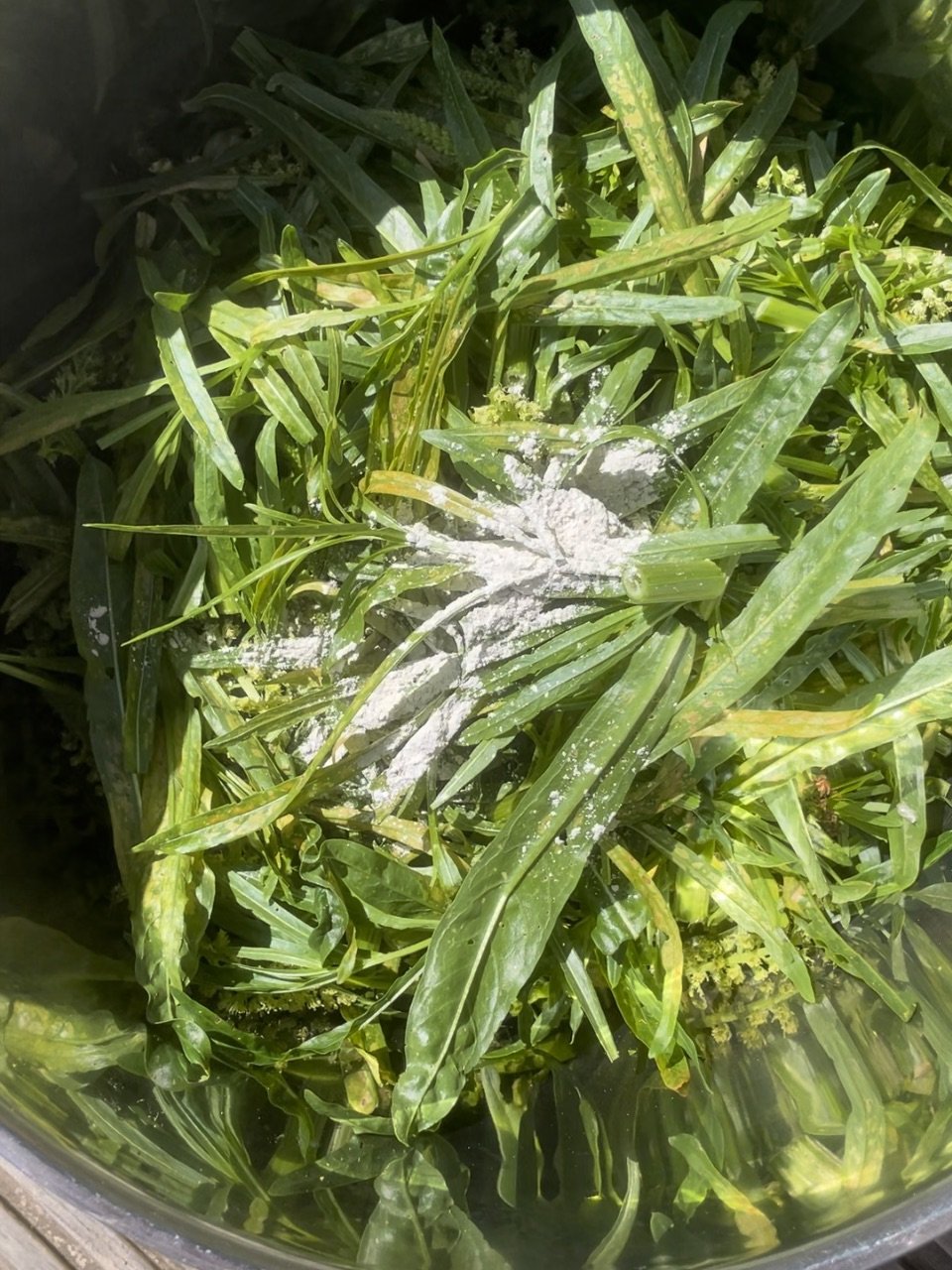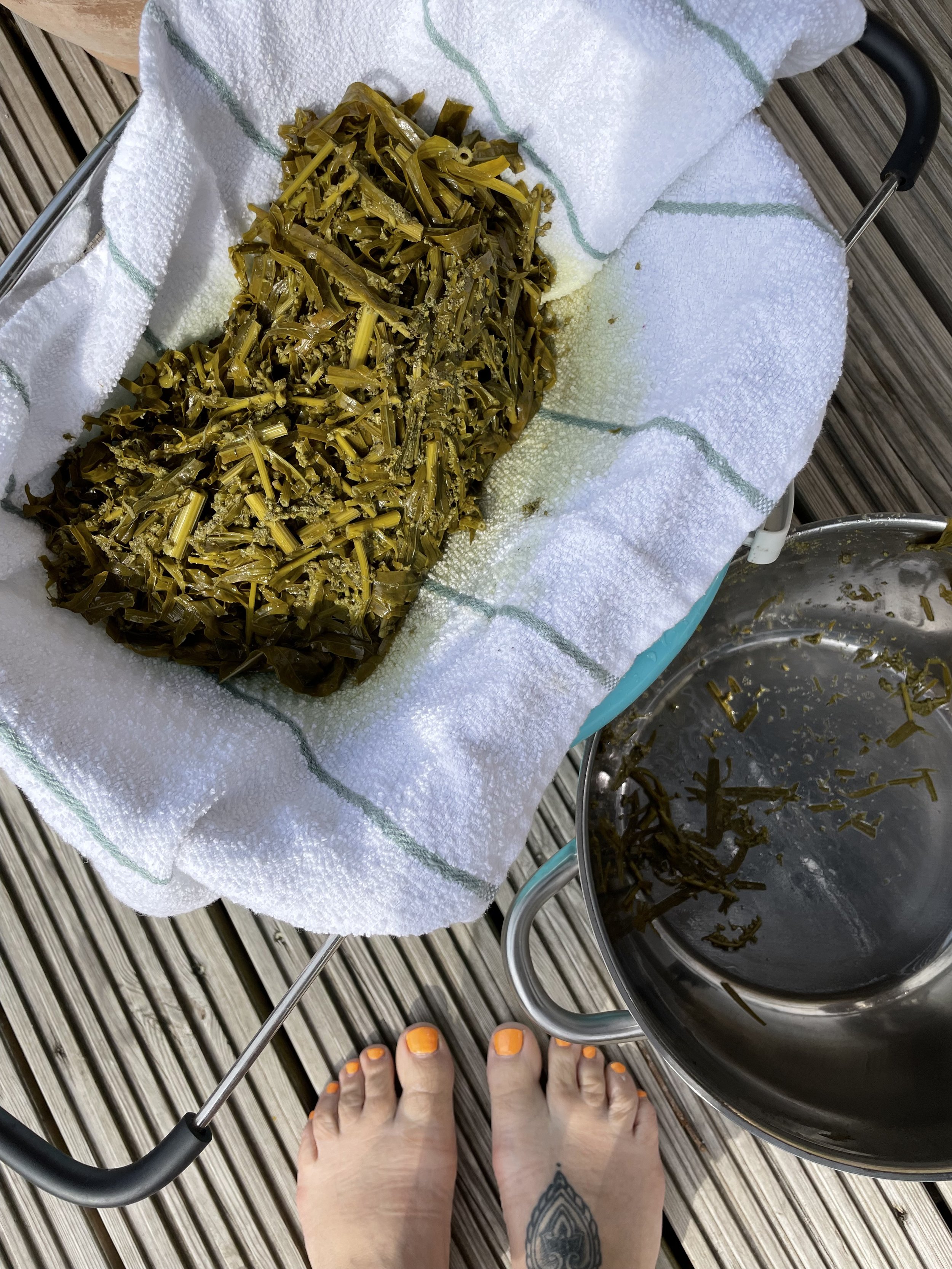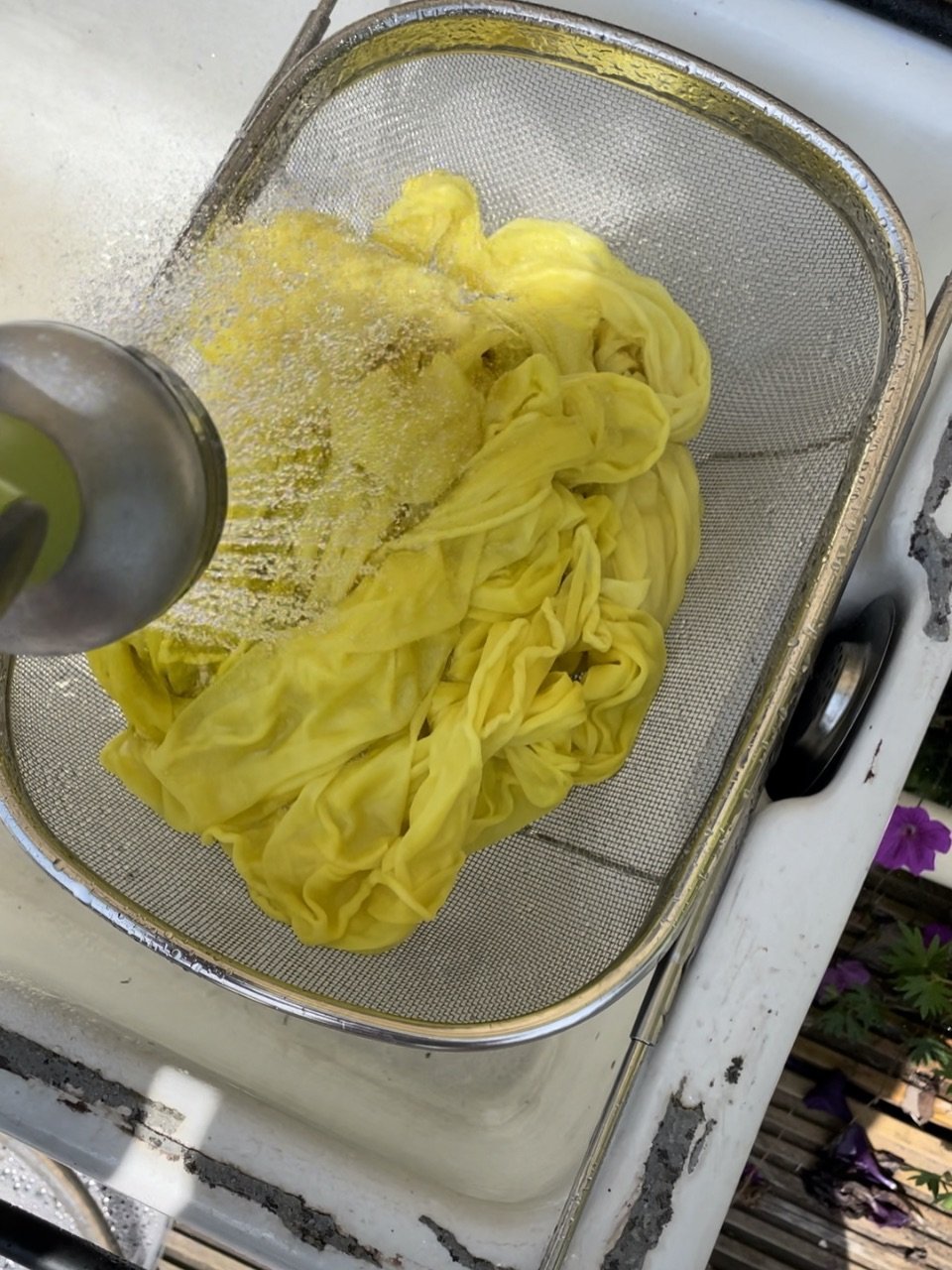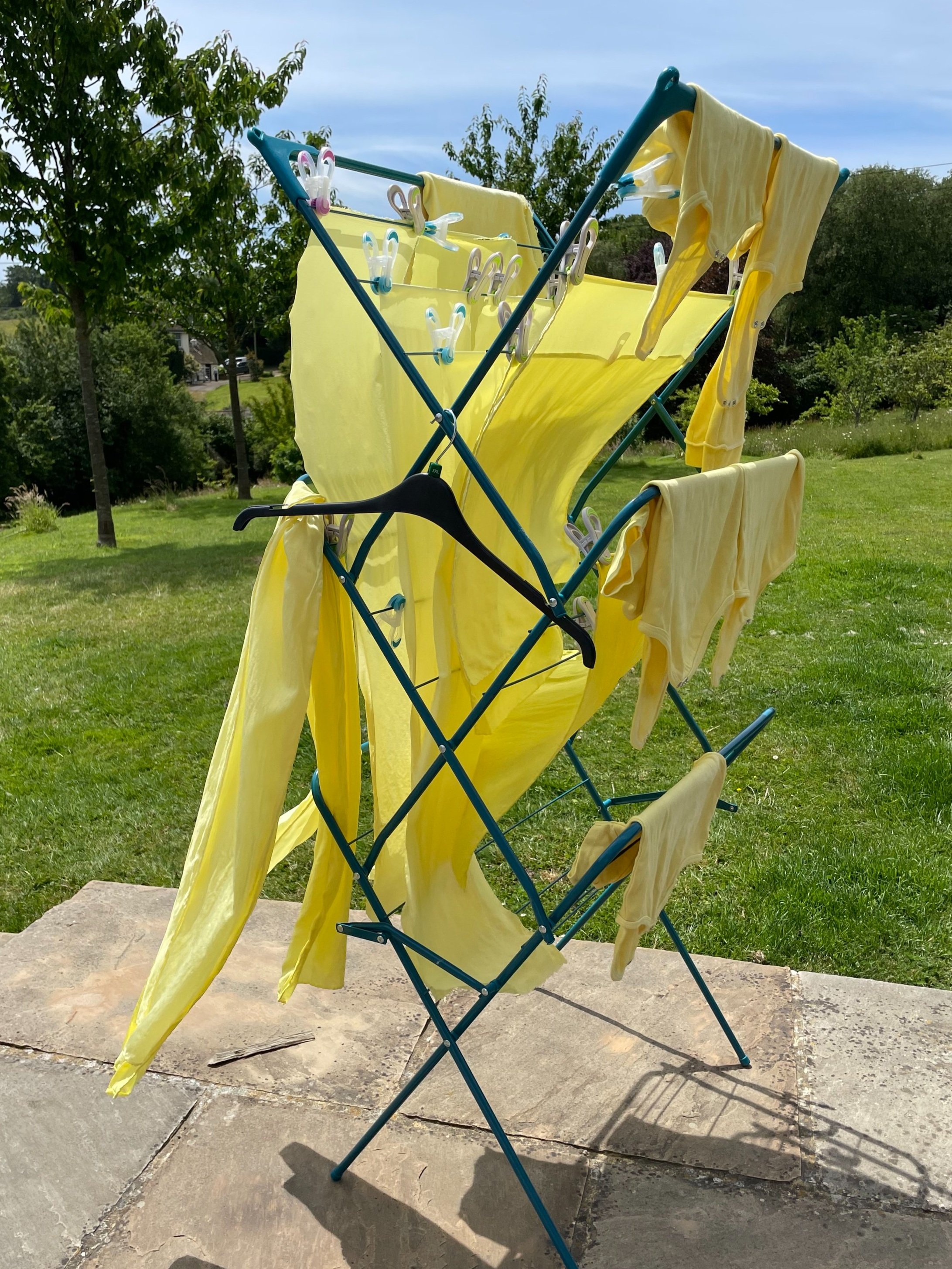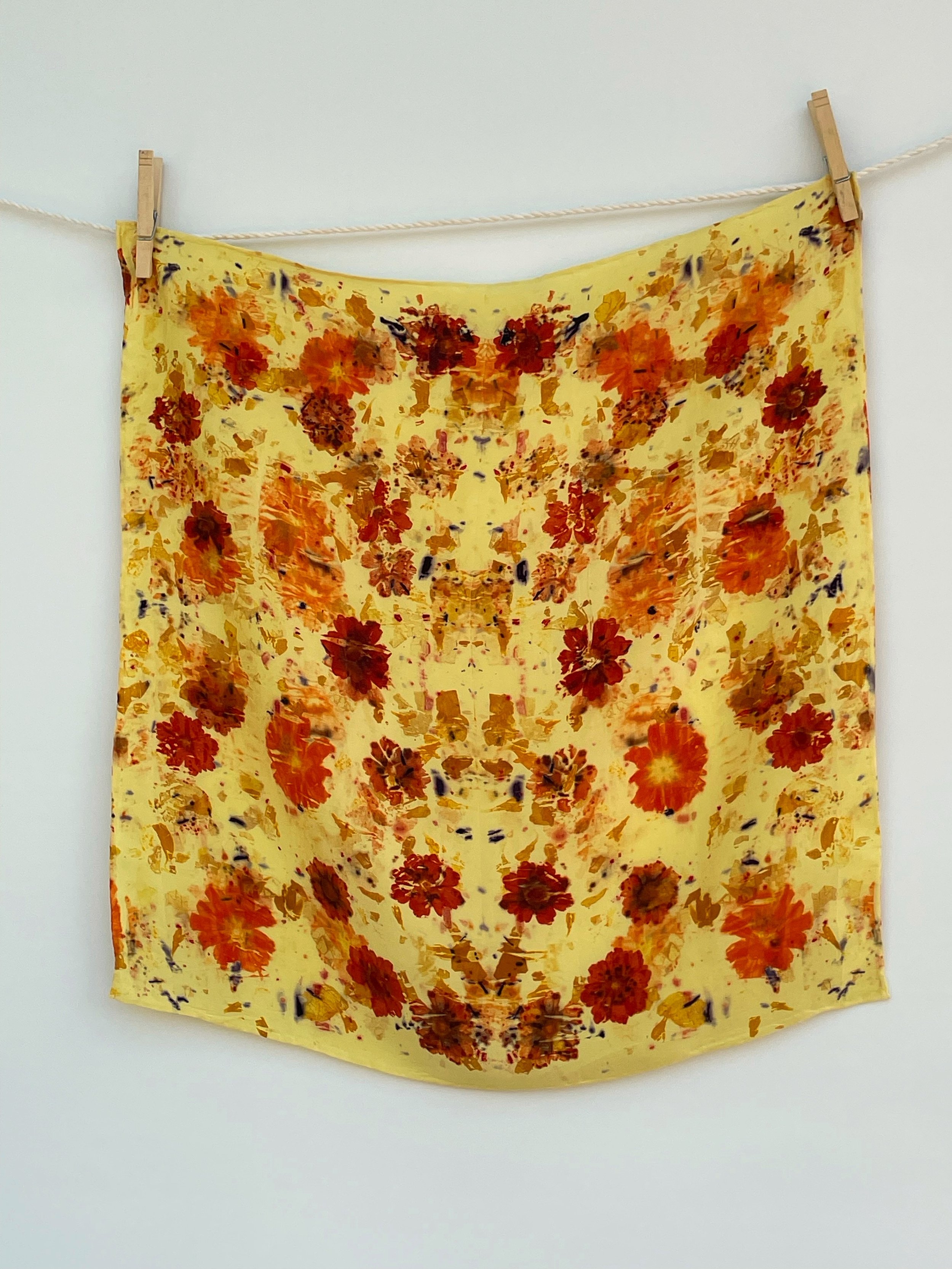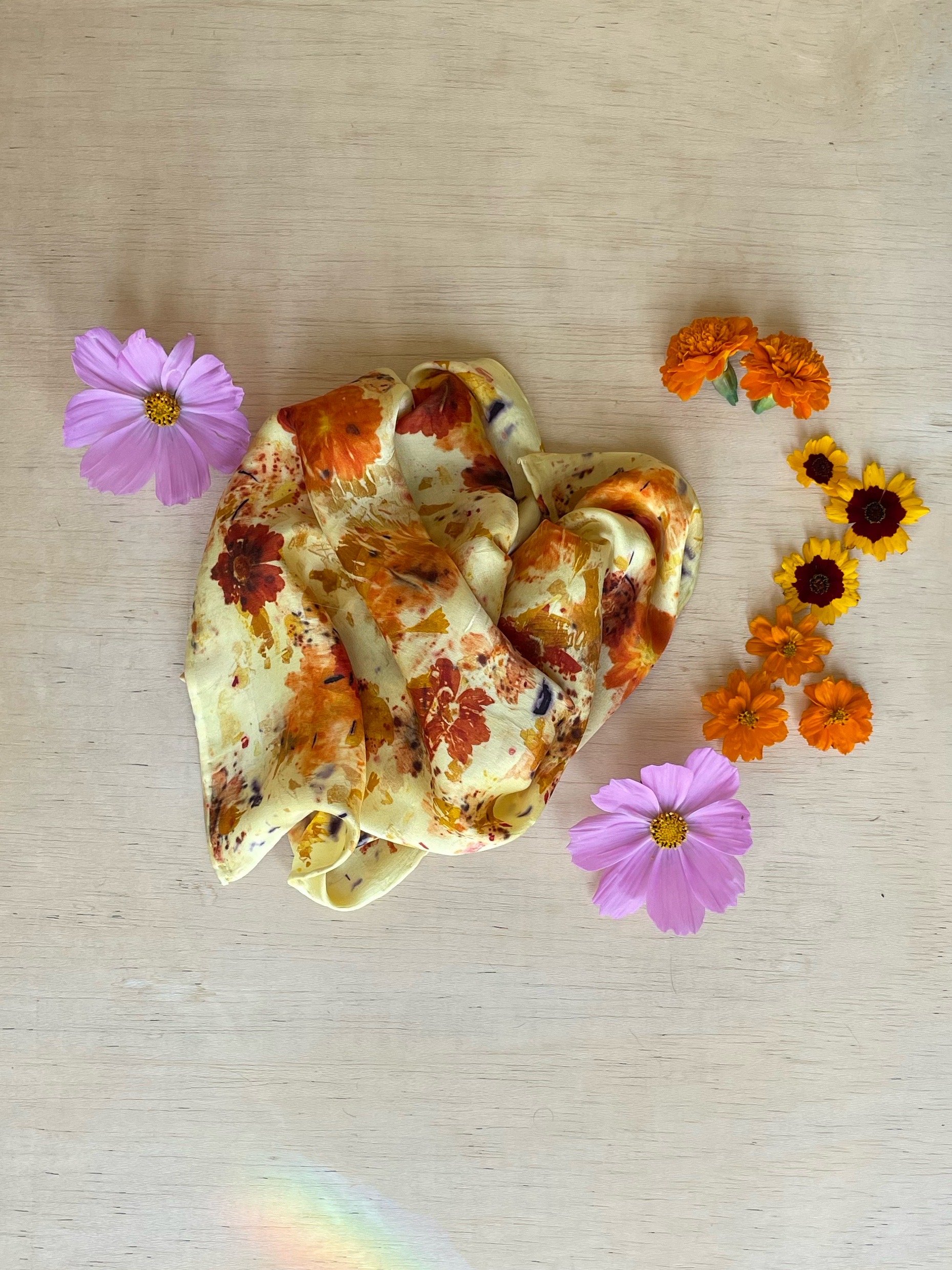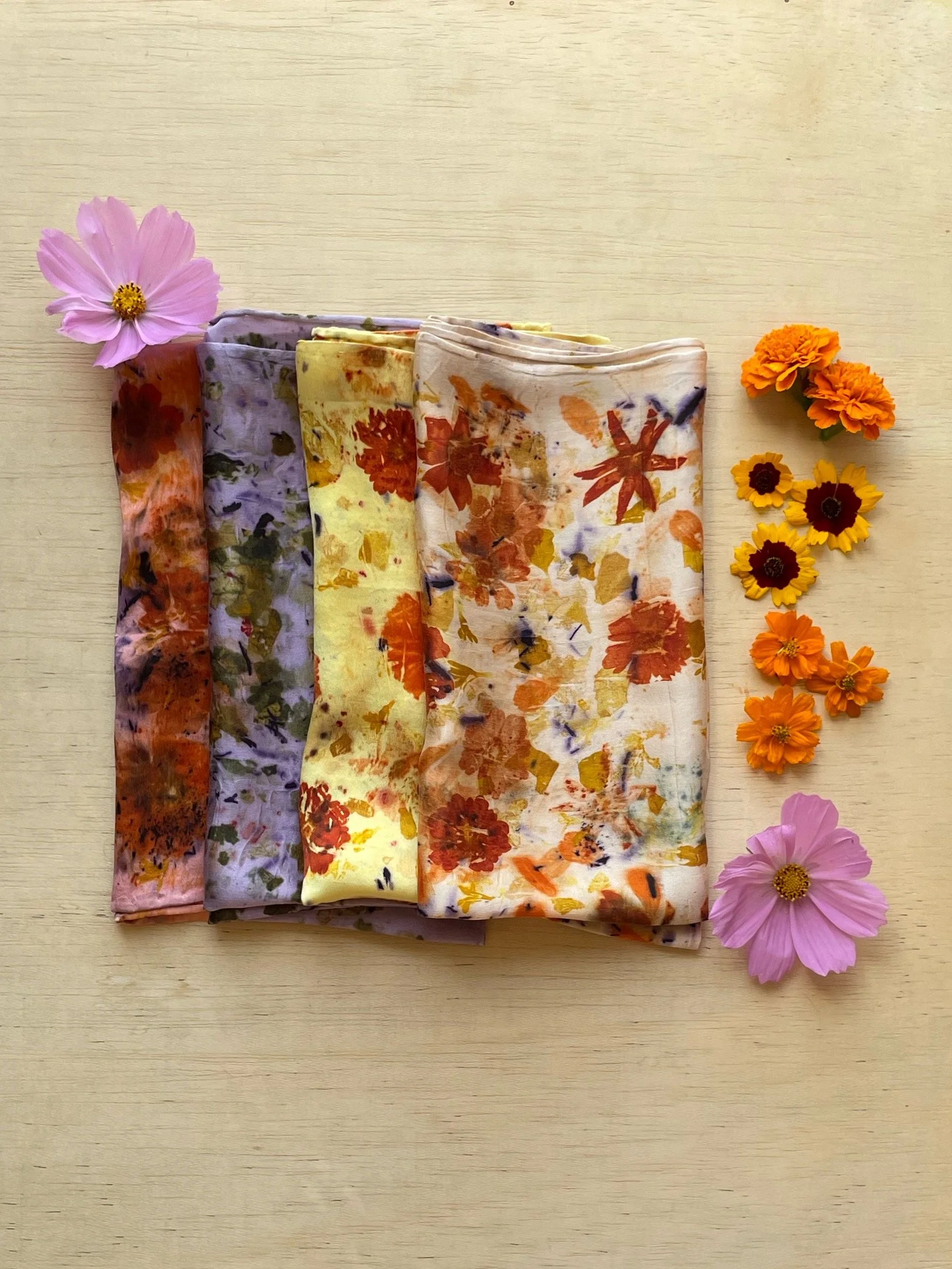Natural Dyeing with Fresh Weld (Reseda luteola)
They were all yellow… some of the results of my fresh weld dye bath
I love dyeing with weld. Not only does it give the most beautiful clear lemony yellows, it has a long history of usage which connects me back through time to dyers of the past. It’s strength and colour fastness make it one of the most used ancient dyes along with woad and madder.
I have dyed with weld powder which does give good colour, but to me there is nothing more magical than seeing the process through from seed to colour.
It’s a pretty nondescript wild looking plant, a biennial with a low rosette of narrow leaves and tall spikes of small greeny yellow flowers in the second year. It can get quite tall, is happiest in poor soil and I have seen it growing in verges near me on the coast. It’s a native of Europe is easy to grow from it’s tiny seeds.
It seems to have a variety of common names including dyer’s rocket, dyer’s weed, woold, dyer’s Mignonette and yellow weed.
Being less showy than a lot of the other dye plants such as coreopsis and marigolds, it can be overlooked in the dye garden, but it’s definitely worth growing!
Historically it was valued as a dye plant in Britain as well as further afield. Weld has been used as far back as the ancient Greeks, the Vikings, the Romans and Medieval Europe. Using weld in combination with woad or indigo has always been the traditional way to obtain greens. The classic ‘Lincoln Green’ said to be worn by Robin Hood was weld overdyed with woad. Weld lake pigment was also used to make paints and was famously found in Vermeer’s Girl with a Pearl Earring.
So we are in good company!
The Plants
The plants I used for this dye bath were in their second year. I grew them from collected seed, germinating them in a pot first.
Even though they are biennials, quite a few of my plants decided to flower in their first year, so I was able to crop them last summer. I left some of them in the ground and they rewarded me with a second crop of flowers.
I decided to harvest them in late June when they were in flower but had not gone over yet.
The Method
I used a generous amount of plant material and chopped it into the pot. I wasn’t sure how strong it would be, so just thought I’d make up a dye pot and see how far it went! I knew from my experiments with weld powder that the colour extracted best in an alkaline solution. My water here tends to neutral so I added a couple of teaspoons of chalk powder. This helps to neutralise any acids that may come from the plant material. It really seems to make a difference to the amount of colour so is definately best not to skip. This was then simmered for an hour or so and it produces a fairly murky looking brew… but don’t be deceived- it’s full of lovely colour!
The results are gorgeous summery yellows, which I know will be long lasting even on cellulose fibres. It makes a fabulous base colour for eco printing with flowers as well as over dyeing with madder for rich oranges and indigo for greens.
If you would like to have a go at growing your own weld it is definitely worthy of a space on the garden!
